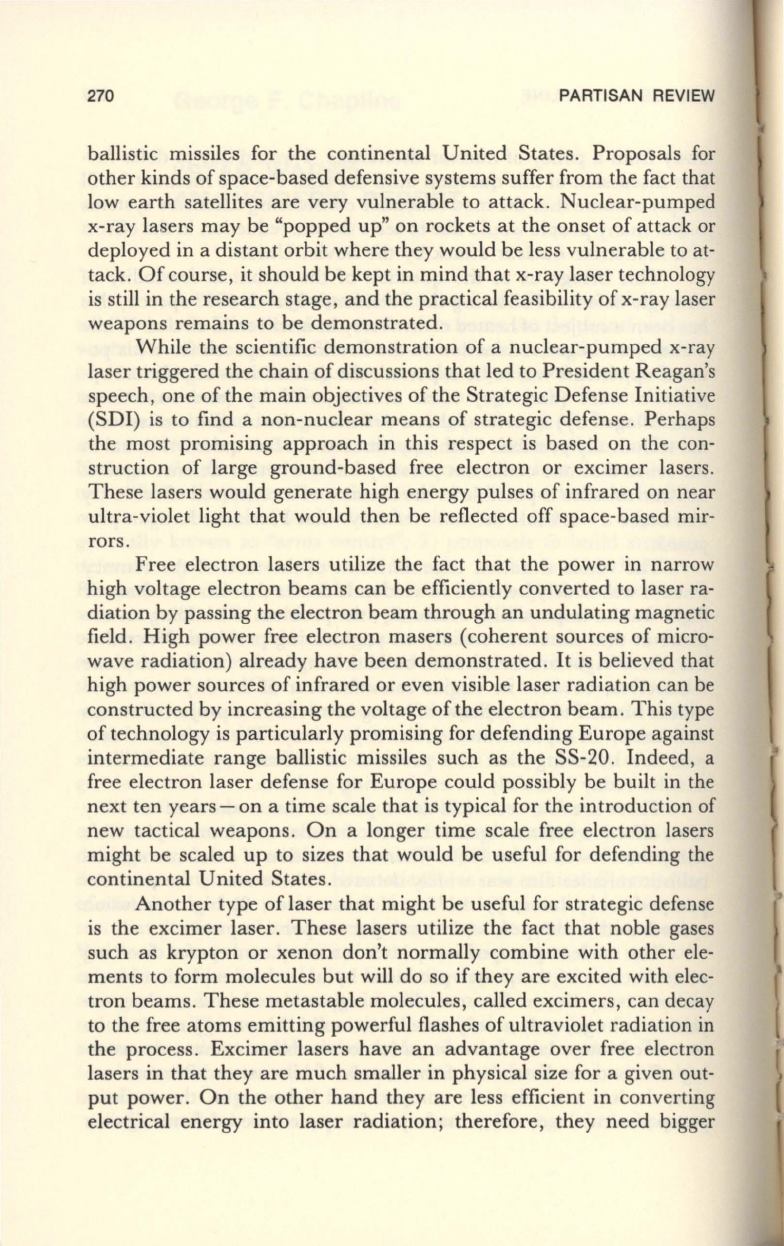
270
PARTISAN REVIEW
ballistic missiles for the continental United States . Proposals for
other kinds of space-based defensive systems suffer from the fact that
low earth satellites are very vulnerable to attack. Nuclear-pumped
x-ray lasers may be "popped up" on rockets at the onset of attack or
deployed in a distant orbit where they would be less vulnerable to at–
tack. Of course, it should be kept in mind that x-ray laser technology
is still in the research stage, and the practical feasibility of x-ray laser
weapons remains to be demonstrated .
While the scientific demonstration of a nuclear-pumped x-ray
laser triggered the chain of discussions that led to President Reagan's
speech, one of the main objectives of the Strategic Defense Initiative
(SDI) is to find a non-nuclear means of strategic defense. Perhaps
the most promising approach in this respect is based on the con–
struction of large ground-based free electron or excimer lasers .
These lasers would generate high energy pulses of infrared on near
ultra-violet light that would then be reflected off space-based mir–
rors .
Free electron lasers utilize the fact that the power in narrow
high voltage electron beams can be efficiently converted to laser ra–
diation by passing the electron beam through an undulating magnetic
field. High power free electron masers (coherent sources of micro–
wave radiation) already have been demonstrated. It is believed that
high power sources of infrared or even visible laser radiation can be
constructed by increasing the voltage of the electron beam. This type
of technology is particularly promising for defending Europe against
intermediate range ballistic missiles such as the SS-20 . Indeed, a
free electron laser defense for Europe could possibly be built in the
next ten years - on a time scale that is typical for the introduction of
new tactical weapons. On a longer time scale free electron lasers
might be scaled up to sizes that would be useful for defending the
continental United States .
Another type of laser that might be useful for strategic defense
is the excimer laser. These lasers utilize the fact that noble gases
such as krypton or xenon don't normally combine with other ele-
ments to form molecules but will do so if they are excited with elec–
tron beams. These metastable molecules, called excimers, can decay
to the free atoms emitting powerful flashes of ultraviolet radiation in
the process. Excimer lasers have an advantage over free electron
lasers in that they are much smaller in physical size for a given out-
put power . On the other hand they are less efficient in converting
electrical energy into laser radiation; therefore, they need bigger


